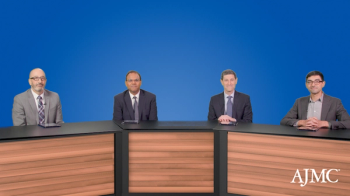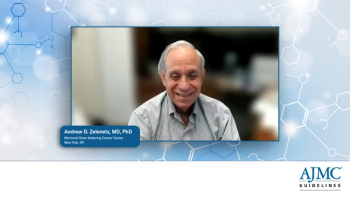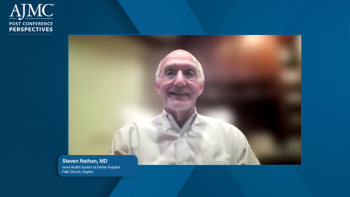
Future Treatment of MDS
The expert panel looks to future treatment management for patients with myelodysplastic syndrome.
Episodes in this series

Ryan Haumschild, PharmD, MS, MBA: I want to think about the future. How is the future changing? Dr Zeidan, I want your thoughts. Where do you see the treatment of MDS [myelodysplastic syndrome] headed? What are you most excited about in the future treatment of myelodysplastic syndrome?
Amer Zeidan, MBBS, MHS: This is a very exciting era for those of us who are actively working in the MDS field. If you think about this historically, in terms of drug approval, azacitidine was approved in the United States in 2004 and decitabine [was approved] in 2006. Between them, lenalidomide was approved in 2005. Between 2006 and 2020, 15 years went by without a single drug approval. That’s despite many clinical trials looking at different agents and unfortunately not succeeding. In 2020, we had 2 drugs [approved]: luspatercept and oral decitabine. That excited a lot of us for a new era in which more drugs become available. This is especially [occurring within] acute myeloid leukemia [AML]—a disease very related to high-risk MDS—where 9 drugs were approved within a few years after a very long period with no new drugs.
The field is certainly going in a better direction, partly because we have a much better understanding of the pathogenesis and abnormal biology of MDS and how we can target it, but also because we have better drugs. We have multiple ongoing clinical trials. MDS is going in the direction that some of the other blood cancers have gone, such as multiple myeloma. In multiple myeloma, we had no active therapies for a long time. We started having active therapies and then combination therapies, and then going from combination therapies to oral combination therapies and moving some of those drugs to early in the treatment paradigm. This is what’s happening in AML and what’s going to happen in MDS.
We’re still in the era of treating patients with monotherapy, with only HMAs [hypomethylating agents]. The next step is going to be combinations. There are multiple phase 3 trials looking at several promising drugs. We have immune checkpoint inhibitors, such as sabatolimab, an anti-TIM3 agent. We have magrolimab, an anti-CD47. Then we have venetoclax, which has already been approved in acute myeloid leukemia for older patients. Those are examples of 3 trials that are already in phase 3. Historically, we’ve seen a large percentage of failure among phase 3 trials. I’m optimistic, but you have to keep that historical perspective in mind.
The oral agent introduction is also a huge deal in MDS. We discussed how it can improve quality of life and adherence for many patients to have an oral alternative. However, the biggest opportunity of oral agents is that it opens the door for total oral therapy for high-risk MDS. Because once you potentially combine oral drugs with one another—you have IDH inhibitors and potentially venetoclax—if those drugs are proven to be active, you could treat not only MDS but also acute myeloid leukemia with 2 pills or 2 capsules, which is unprecedented. Historically, we’ve treated these patients by having them stay in the hospital for multiple weeks and [receive] all kinds of intensive chemotherapy. The future looks very exciting. We’re just scratching the surface.
The last aspect I’d like to highlight is the era of precision medicine. Hypomethylating agents are target agnostic—we use them for all patients with MDS. Oncology is heading is into more targeted therapies and individualized approaches. We’re starting to see some of that in AML, where you have FLT3 inhibitors and IDH inhibitors. IDH inhibitors aren’t approved in patients with high-risk MDS, but we already have a number of studies showing that they’re active. I hope that multiple trials look at some of the other targets, whether it’s TP53 or splicing factors. Ultimately, we’re hoping to move into more [subgroups] of patients based on the drug that’s most likely to help the patients. These 3 directions—combination agents, oral therapy, and targeted therapies based on precision-based approaches—are the most exciting directions in MDS research.
Ryan Haumschild, PharmD, MS, MBA: It sounds like the future is bright in MDS. That’s great for our patients and providers.
Transcript edited for clarity.
Newsletter
Stay ahead of policy, cost, and value—subscribe to AJMC for expert insights at the intersection of clinical care and health economics.








































